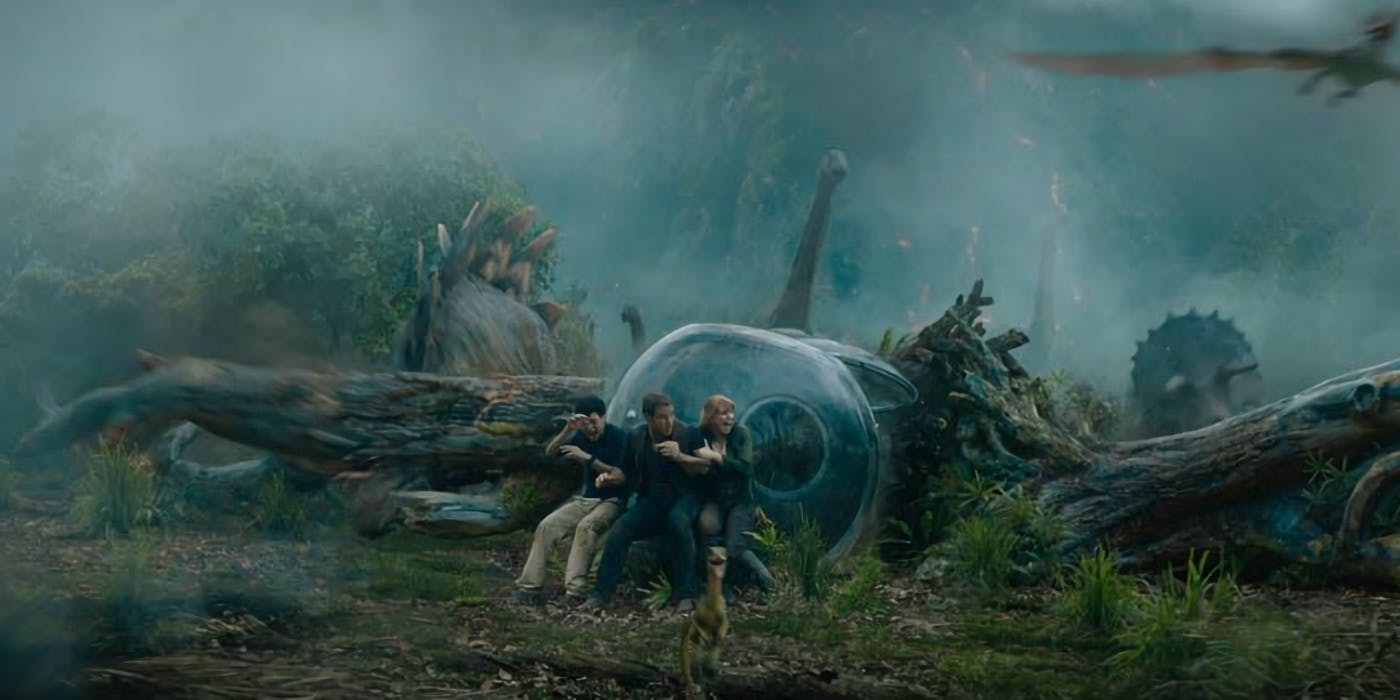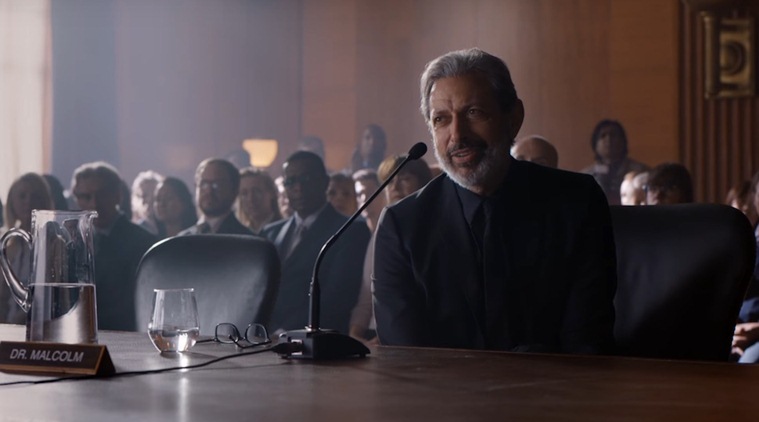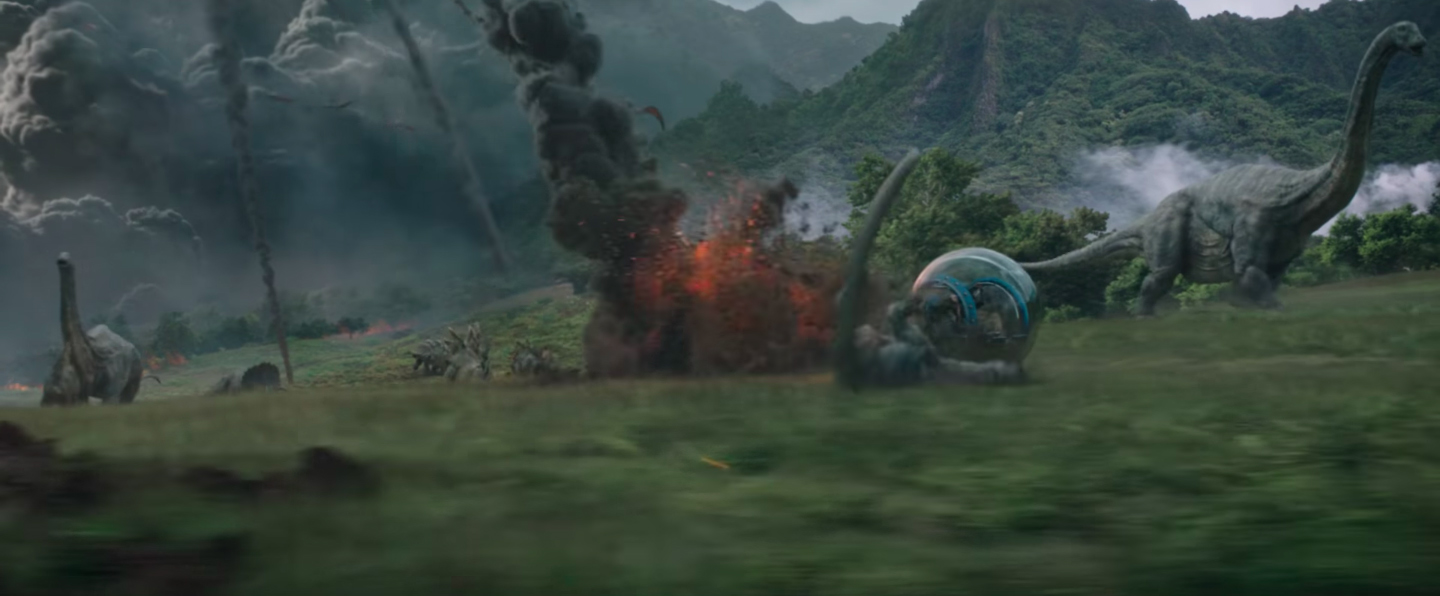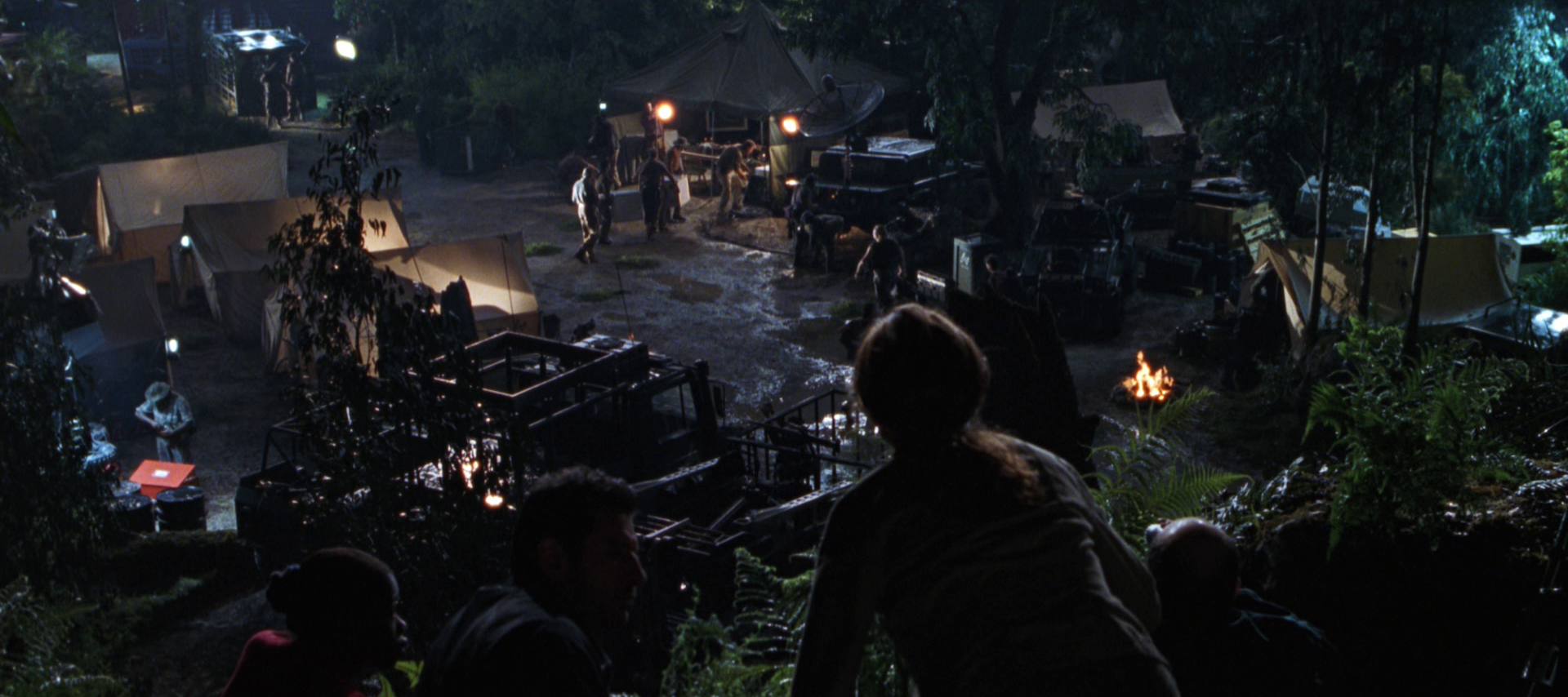
After Jurassic World managed to win over general audiences with a worldwide gross of over $1.6 billion (#5 on the list of highest grossing films of all time), a sequel was of course inevitable. Despite its mammoth success, it failed to be truly unique in that it followed all the same plot points as the original Jurassic Park. Naturally, when the sequel was announced, there were concerns it would be spiritual remake of The Lost World: Jurassic Park, the original incredibly underwhelming sequel. So how does Jurassic World: Fallen Kingdom compare?
An Interesting Ethical Debate
An incredibly exposition-heavy montage of news coverage at the beginning reveals that Isla Nublar is in great danger from a once dormant volcano that has turned imminently active. We even see Jeff Goldblum return in a cameo as Dr. Ian Malcolm testifying to Congress that nothing should be done for the soon to be extinct again dinosaurs. This does raise an interesting question. How many human lives and resources should be risked to prevent this fate from befalling dinosaurs? Malcolm, much as he did in the original film, believes that genetically synthesizing them was a mistake to begin with, and that this disastrous event, while tragic, is necessary for nature to restore balance.

Interestingly, there is no mention of Isla Sorna, the island featured in The Lost World and Jurassic Park III. If Isla Nublar is destroyed, surely the dinosaurs left on the other island will be fine, therefore they won’t be extinct. There are only three possible explanations: the filmmakers forgot and hoped audiences would too, the filmmakers wish to erase those two films from canon, or the dinosaurs from Isla Sorna were all transported to Isla Nublar to open Jurassic World. However that would have been extremely difficult logistically. So most likely it was Universal just being lazy.

Returning to Isla Nublar
Despite the government doing nothing, Claire is determined to save the dinosaurs. She seems to have learned her lesson from the last film, however it is revealed she and Owen broke up for reasons as contrived as them getting together in the first place. The two of them, along with a new team, travel to Isla Nublar under the orders of a “friend” of John Hammond’s that was never previously mentioned because the writers hadn’t created his character yet. And to be fair, the film shines when the characters are on the island tracking the dinosaurs, and also dealing with the volcano spitting out fire and death. Director J.A. Bayona’s background in horror shows as there are scenes of genuine suspense and dread; the likes of which we haven’t seen since the original. He remembered that part of what made the first film great wasn’t just the Spielberg “wow factor” but the terror as well.
The entire eruption sequence is spectacular in its action, stunts and effects. In a welcome change for the series, this is the very first time audiences get to see what the original dinosaur extinction event looked like 65 million years ago. It’s thrilling, tense, and quite emotional at times. The dinosaurs don’t understand what’s happening and it’s heartbreaking to watch them run and fight for their lives from an unforgiving, cruel force of nature. It hearkens back to the horrors the real dinosaurs must have faced at the end of the Mesozoic Era. Perhaps what makes it most compelling is that we’re used to seeing the dinosaurs, especially the carnivores, as a threat to the humans on the island. This however, puts them in the most vulnerable position we’ve ever seen them in. Overall the time spent on the island is the very best sequence in the film. Unfortunately, very little screen time is devoted to this endeavor.

Jurassic World: The Lost World…Again
Much to its own detriment, the film goes down a very familiar story path. InGen arrives to round up the dinosaurs, with a special emphasis put on Blue, the raptor. They wish to exploit the dinosaurs, use them for financial gain, and genetically create new ones to be weapons. Does any of that sound familiar? The film even contains two characters, a hunter and a businessman, who are essentially carbon copies of Roland and Ludlow from The Lost World. What then follows is a third act which seems to drag on far longer than it should. The tension and suspense all but evaporate when dinosaurs are fighting and chasing characters room to room for 10-15 minutes straight. To be fair however, this isn’t so much an issue with J.A. Bayona. His directing is solid and helps elevate certain parts of the film. It’s quite clear the majority of the film’s issues lie in its screenplay, which was co-written by Jurassic World director Colin Trevorrow.

Setting the Stage for Jurassic World 3
Or should it be called Jurassic Park 6? The series’ titles never made much sense with each other. While not ending with a cliffhanger exactly, the film does leave itself open for another installment, which is already set for release in 2021 with Colin Trevorrow back as director. Without giving anything away, the ending does take the series to a place it hasn’t been before. Perhaps it’s a place it should have gone long ago, but there’s no changing the past. And no matter where the franchise decides to go, it’s very unlikely the next film would be a semi remake of Jurassic Park III. So long as it tries something new and different, it will be worthy of some recognition.
Ultimately, Jurassic World: Fallen Kingdom could have been great, but settles for mediocre at best. It certainly had the potential. The very best parts on are the island itself, but the rest of it is just everything we’ve already seen before. And while it does have better directing, effects, and action than its predecessor, it still fails to live up to the original film or the hype that it has generated. All it shows is that Universal still hasn’t learned the lesson from Dr. Malcolm in Jurassic Park. Just because they can keep making sequels, doesn’t mean they should.





